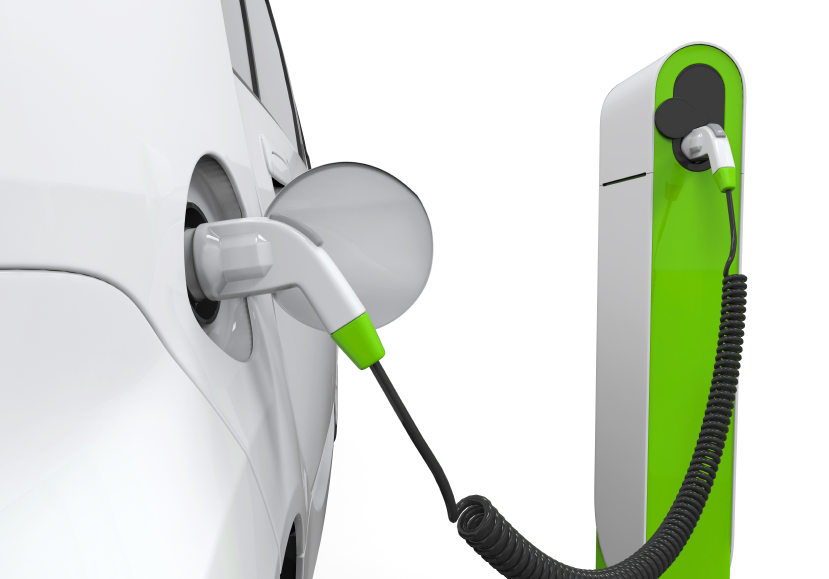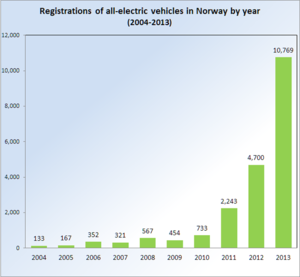Electric Vehicles – Some Lessons from Norway
In Ireland at the moment there are 9,880 electric vehicles in the Irish fleet including electric hybrids. The most common model is the Toyota Prius which employs an electric element to the drive process which works harmoniously with a petrol engine. Still, the Prius, at least in its original form, is not considered a full electric plug-in vehicle. For an example of those, we would have to consider the Tesla, or the Nissan Leaf. Those are vehicle’s which can run exclusively on electric power and they are far less common in Ireland – there are less than 150 Nissan Leaf’s registered here at the moment. But there are signs, internationally, that the full electric vehicle is beginning to woo the buying public.
The rise of the Electric-Powered Vehicle
First lets examine how we got to this point: Fossil fuels, a finite resource, are seen as environmentally unkind and the internal combustion engine consequently came under attack – first by those concerned for the environment and then by the Government response which pinned motor taxation rates to CO2 emissions. The manufacturers responded – diesel-fueled engines were the first to see improvements in both fuel economy and CO2, and the performance standards of those engines improved too as the turbo diesel became the norm. Next, came improvements to the petrol engine which has seen it become market competitive again against the comparable diesel, after a long period in decline. In parallel with those developments the manufacturers were also working on an alternative – the electric-powered vehicle.
Norway: the first of the Early Adopters
The Nissan Leaf, an example of a full electric vehicle, has proved a resounding success in Norway. Last year, in April, the electric car was the second most sold of all aspiration types in Norway and the Nissan Leaf recorded 455 new car sales that month alone. The situation for electric vehicles further improved in 2014. The Leaf is the most popular electric vehicle in Norway with 2,059 new vehicle sales in Q1 this year and a 41% share of this segment of the market. However, the real story in 2014 is the surge in popularity of the Tesla Model S. That vehicle recorded new car sales of 2,057 units in the first 3 months of this year – up from 1,986 for the whole of 2013. Retailing at the equivalent of €81,000 the surge in growth for the Tesla in Norway is a clear signal that luxury car buyers are prepared to opt for electric. According to a research report published by Navigant Research in April 2014, the fleet of light duty plug-in electric vehicles in use in Greater Oslo Region in 2013 is expected to represent 10.7% of the city’s total registered light-duty vehicle stock. One in 100 vehicle’s in Norway is now electric.
So why has Norway embraced the electric vehicle? Firstly, the purchase cost is competitive. Electric vehicles are exempt from VAT and purchase tax and this makes the cost about the same as a similar traditional car. But, there are other reasons too, an electric vehicle can drive for free through all toll plazas in Norway, drive in bus lanes, and park and charge for free at public parking. Some of these incentives will sound familiar: Ireland affords VRT relief for electric vehicles and grants are available through the Sustainable Energy Authority of Ireland. There are charging points available in public parking spaces in Ireland too. The Government in Ireland has set an overall target of 220,000 electric vehicles in the Irish fleet by 2020.
BMW i3
Aside from full electric vehicles, and hybrid vehicles, both mentioned earlier in this article, the manufacturers are presenting to market an electric vehicle with an added range extender. Manufacturers are responding to one of the critical concerns of potential electric-vehicle drivers – the issue of “range-anxiety” – or the concern that a vehicle will either run out of juice before you have arrived at your destination, or, which does not have adequate charging facilities when you are in need of them. The BMW i3 is an example of this type of electric vehicle and is considered, possibly, a big step towards transitioning drivers towards electric vehicles. The i3 operates on 100% electric power to a range of around 130km but it also has an optional range extender (a 650cc two-cylinder petrol-powered unit which develops 34hp) which can extend the overall range to about 240km.
Bob Flavin, Irish Independent, says the i3 is a “game-changer”.
There’s a new kid in town though, the BMW i3 and it’s a proper game-changer. The i3 is an all-electric car that, in my real world testing, can do 120kms even when you zip about on the motorway. Added to that, my test car came with a range extender that is to say there’s a 700cc engine in the boot provided from a BMW motorbike. That can give you another 120kms from good old petrol.”
Conclusion
While an electric car, even one with the power of petrol to back it up via a range-extender, requires a different ownership mentality – the vehicle will need to be charged after nearly every journey – the evidence from Norway suggests those concerns are not insurmountable and the public is prepared to embrace the electric vehicle. Many of the incentives available in Norway are already available in Ireland but others, such as a facility to use bus lanes, would probably add significant ownership value for any potential Irish buyer. Obviously there would come a point in the future when this practice would need to be curtailed – everyone can’t use bus lanes – but for early adopters and to assist in reaching critical mass the practice appears innovative.
Meanwhile, Elon Musk, owner of Tesla, is building charging stations across Europe which will charge Tesla electric cars in 20 minutes, and give a range of 130 miles. So, considering the incentives available, and the infrastructure that is being put in place it seems the electric vehicle is being afforded every possible opportunity to thrive. Still, whether critical mass will be achieved is far from certain, and we are a long way short of that point at the moment.

